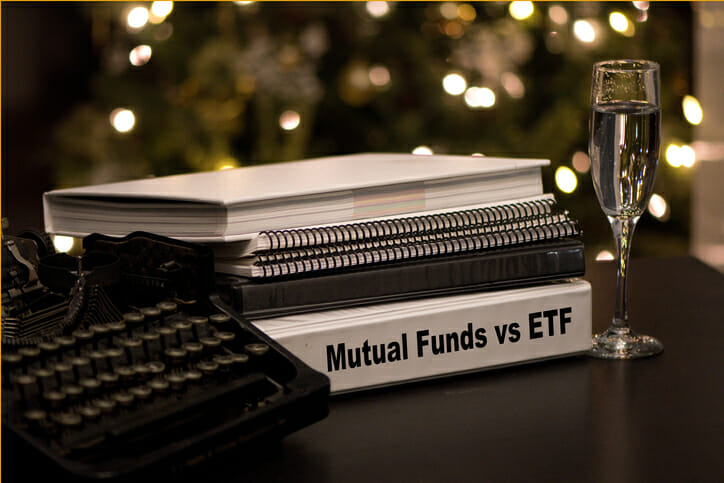
Many investors use fixed-income investments to balance risk and provide regular income. Some investors choose individual bonds, while others invest in bond mutual funds. A fixed-income ETF is another option that invests in a diversified pool of bonds at a lower cost. Understanding what a fixed-income ETF is, how it works and how it compares with a mutual fund can make a difference in your portfolio. A financial advisor can help you put an investing plan together for the future.
What Are Fixed-Income ETFs?
Fixed-income exchange-traded funds (ETFs) are very similar to stock ETFs. They offer the diversification of a mutual fund through a single transaction, but at a lower annual expense ratio. Additionally, they trade throughout the day like a traditional bond, so they are highly liquid. Fixed-income ETFs are available for a variety of bond types, including ETFs that track bond indexes.
ETFs work very similarly to mutual funds. Each fixed-income ETF focuses on a specific sector of the bond market or mimics a bond index. With one investment, you instantly diversify your money into a pool of bonds within the portfolio.
You can buy and sell fixed-income ETFs at any time during normal trading hours. The price varies based on demand for the ETF and the value of the underlying assets. Typically, investors can view a listing of all of the bond assets held by each ETF every day. This provides unparalleled transparency for investors who want to understand what investments are inside their ETFs.
Fixed-Income ETFs vs. Mutual Funds

Fixed-income ETFs and mutual funds offer a simple way to diversify your portfolio. And you can easily invest in multiple bonds through a single transaction. However, there are differences that you should understand before making an investment decision.
- Price vs. Net Asset Value (NAV): Mutual funds reprice at the end of each trading period based on the net asset value of the underlying assets. ETFs trade throughout the day based on demand, which can cause the short-term price to differ versus the net asset value of the ETF’s assets.
- How to buy them: You purchase ETFs through a brokerage or retirement account. Mutual funds, however, can be bought through a brokerage account or retirement account, financial advisor, or directly from the fund company.
- Fees to buy and sell: Investors purchase ETFs just like an individual stock or bond. While some brokerage firms charge a commission on these transactions, many eliminated commissions to attract new customers. Many mutual funds charge a “load” based on which class of shares you buy. The load is the amount you deduct from each investment and pay to the advisor.
- Annual expenses: ETF expenses are generally some of the lowest available. Mutual fund expense ratios vary based on the fund and which company manages the investment. Many mutual funds include 12b-1 marketing fees in their expense ratio to compensate your advisor.
- Access to fund holdings: An ETF publishes its holdings on a daily basis, which allows investors to make informed decisions. By comparison, mutual funds must publish their portfolios semi-annually but often do so quarterly or monthly. Because of this information lag, a fixed-income mutual fund investor may be making an investment decision with outdated information.
Do Fixed-Income ETFs Make Sense for Your Portfolio?

A fixed-income ETF investment can make sense for your portfolio if you want to diversify your assets and lower your fees. You can buy or sell the ETFs instantly, which allows you to manage your portfolio in a timely manner. With many brokerage firms eliminating trading fees for ETFs, they now offer a low-cost alternative to mutual funds. There are no commissions or 12b-1 fees with ETFs. And annual expenses are typically lower than mutual funds for similarly invested portfolios.
Bottom Line
For investors looking for regular income, adding a fixed-income ETF to your portfolio can make sense. These investments offer instant diversification through a single transaction. And there are numerous ETFs to choose from that focus on different fixed-income niches and geographies. With their ease of use and low expense ratios, many fixed-income mutual fund investors are switching to ETFs.
Tips for Investing in ETFs
- ETFs generally have a lower expense ratio than mutual funds, which can lead to higher annual returns. SmartAsset’s investment calculator helps you forecast the growth of your portfolio over time, based on your inputs. You can adjust the starting amount, additional contributions, rate of return, and timeframe to personalize the results.
- When creating your investment portfolio, having the professional knowledge of a financial advisor can be helpful. Finding a financial advisor doesn’t have to be hard. SmartAsset’s free tool matches you with up to three vetted financial advisors who serve your area, and you can interview your advisor matches at no cost to decide which one is right for you. If you’re ready to find an advisor who can help you achieve your financial goals, get started now.
Photo credits: ©iStock.com/fizkes, ©iStock.com/Douglas Rissing, ©iStock.com/tortoon